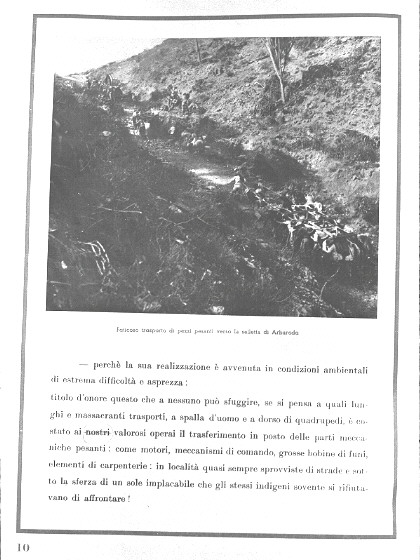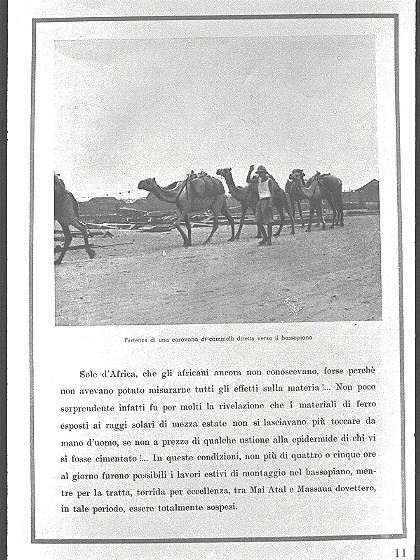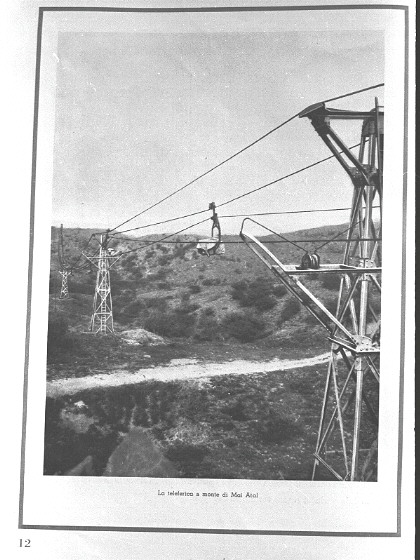This website has been archived from TrainWeb.org/italeritrea to TrainWeb.US/italeritrea.
This website has been archived from TrainWeb.org/italeritrea to TrainWeb.US/italeritrea.
Pages: Cover-5, 6-9, 10-13, 14-17, 18-21, 22-25, 26-29, 30-end
 |
The exhausting transport of heavy equipment to the Arbaroba saddle
No on can help notice the greatness if one considers how many long and murderous trips on the shoulders of men and the backs of animals the transfer of heavy mechanical parts (like motors, control mechanisms, huge coils of cable, and lumber material) cost our heroic workers, in an area almost devoid of roads and under the scourge of an implacable sun that the locals themselves often refused to confront! |
 |
Departure of a camel caravan headed for the lowlands The African sun, which the Africans still didn't understand, maybe because they had not been able to measure all its effects on materials! Many realized to their surprise, in fact, that iron materials exposed to the rays of the mid-summer sun did not permit man's hand to touch it except at the cost of burned skin for whoever tried! In these conditions in the summer, no more than four or five hours assembly work were possible in the lowlands, while on the incredibly hot stretch between Mai Atal and Massawa, work had to be completely suspended during that period. |
 |
The cableway inland from Mai Atal. |
 |
TopographyThis marvelous machine which continuously transfers goods through the air without aircraft at a rate of around 30 metric tons per hour in each direction, is a good 75 km long! The route layout is represented by a broken line that begins at Massawa in two branches, at Campo di Marte (Mars Field) and the Munitions Dump, respectively, which meet at Zaga, one via Otumlo, the other directly, and which then proceeds in a single branch from Zaga to Asmara, turning in Dogali, Mai Atal, Sabarguma, Ghinda and Nefasit. At this last turn before the terminus at Godaif, near Asmara, the line turns at its sharpest angle. While the section from the highlands to Nefasit is straight, the section from Nefasit to the sea inscribes an almost imperceptible arc, with its center to the Southeast. The strange course layout, which departs from the straight line normally preferred for cableways, owes its unique configuration to the requirement that the aerial line follow as much as possible the route of the existing highway to facilitate services for its construction, and now, as a finished work, to make it easier for repairs during its operation. The profile of the route, level from the sea to near the Mai Atal station (about 24 Km from Massawa) becomes from there on ever steeper |
Pages: Cover-5, 6-9, 10-13, 14-17, 18-21, 22-25, 26-29, 30-end